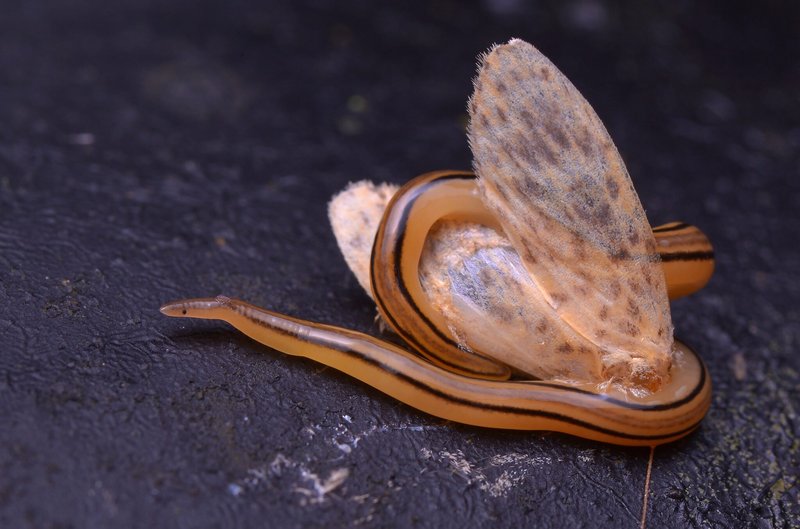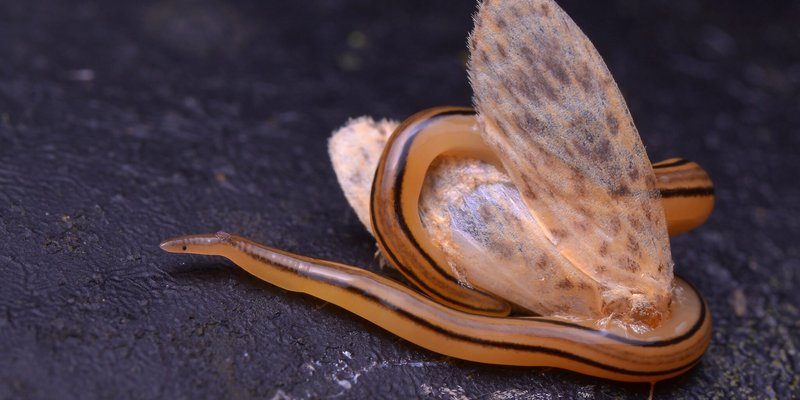
Ribbon worms belong to the phylum Nemertea and have a range of fascinating adaptations for feeding. They can vary greatly in size and habitat, but one thing is clear: their feeding habits will make you rethink what you know about marine life. Whether you’re a biology enthusiast or just someone who enjoys learning about the wonders of nature over your morning coffee, let’s dive into the documented feeding techniques of ribbon worms!
Understanding the Ribbon Worm Anatomy
Before we get into their feeding techniques, it helps to understand what makes ribbon worms tick. Their bodies are long and flexible, resembling strips of ribbon, hence the name. They generally range from a few inches to several feet long! The ribbon worm’s body consists of three main parts: the head, the trunk, and the tail.
The head is equipped with a pair of eyes (though they can be quite simple) and a proboscis, which is a long, tubular structure that plays a critical role in feeding. Think of it as a Swiss Army knife—it can do a lot of different things! Some ribbon worms can even extend their proboscis quickly to capture prey. The trunk is where most of the digestion happens, and the tail assists in movement.
In short, their anatomy is perfectly designed for their feeding methods. You might be wondering what those methods are. Let’s explore!
Proboscis Extension: The Art of Capture
One of the most fascinating feeding techniques of ribbon worms is their use of the proboscis to catch prey. When a ribbon worm spots its next meal, whether that’s a small crustacean or a worm, it can quickly extend its proboscis outwards. This appendage is often sticky and can ensnare unsuspecting prey with ease.
Imagine you’re trying to catch a fly with a sticky note. The proboscis works in much the same way—it grabs hold of the critter and brings it back toward the worm’s mouth. This technique allows ribbon worms to capture prey that may be much faster or more agile than themselves. It’s like snagging a quick snack without having to chase it down!
Once they’ve caught their meal, ribbon worms use digestive enzymes to break down the prey before pulling the nutrients into their bodies. The whole process is pretty efficient, wouldn’t you say?
Ingestion Techniques: How They Eat
After successfully grabbing their prey with the proboscis, the next step is ingestion. Ribbon worms have a mouth located at the base of their proboscis. The digestion process isn’t just about munching; it’s more like a magical transformation.
Here’s how it works: once the prey is drawn in, it’s often coated in digestive fluids. These fluids begin breaking down the food both outside and inside the worm, allowing it to absorb the nutrients efficiently. In fact, ribbon worms can often digest their prey outside their body before fully consuming it, which can sound a bit gruesome, but it’s all part of the circle of life in the ocean.
The process doesn’t take a long time either. Within a short span, they can convert what once was a living organism into energy. This efficient system is crucial for their survival in the competitive marine environment, where every meal counts.
Prey Selection: What Do Ribbon Worms Eat?
You might be wondering what exactly ribbon worms enjoy for lunch or dinner. The truth is, they have quite an appetizing menu! Ribbon worms primarily feast on small marine invertebrates, including:
- Crustaceans like shrimp and crabs
- Other worms
- Small fish, though this is less common
- Polychaete worms, which are often found in similar habitats
The feeding preferences of ribbon worms can vary depending on their species and their environment. Some ribbon worms are opportunistic feeders, meaning they’ll eat whatever they can catch, while others may have specific targets. This diversity allows them to thrive in various habitats, from tidal pools to deep-sea environments.
Another interesting aspect is their role in the ecosystem. By controlling the population of smaller invertebrates, ribbon worms help maintain a balance in their underwater world. So, while they might seem small and simple, they play a significant role in the marine food web.
Feeding Behavior and Habitat
Ribbon worms are typically found in coastal waters, muddy or sandy substrates, and can often be spotted in tidal pools. Their habitat plays a crucial role in their feeding techniques. For example, in a rocky environment, they may bury themselves and wait patiently for unsuspecting prey to wander too close.
In contrast, some ribbon worms are more active hunters. They can glide through the water or their chosen substrate, looking for meals. This adaptability is impressive! It allows them to utilize different feeding strategies depending on their surroundings.
If you’re ever at the beach and come across one of these intriguing creatures, take a moment to observe. Their feeding behaviors can be a reminder of the amazing adaptations life takes to survive in even the most unexpected places.
Unique Feeding Mechanisms: An Adaptive Edge
What makes ribbon worms even more fascinating is their ability to employ various feeding techniques based on environmental conditions and prey availability. For example, some species can produce toxins that help subdue their prey. Imagine having a built-in defense system while you eat!
Additionally, they may use **camouflage** to blend into their surroundings. This stealth approach can surprise prey, making it easier for the ribbon worm to extend its proboscis and make a quick catch. This combination of strategies gives ribbon worms a distinct edge in finding food and surviving in the ocean.
This adaptability has led scientists to study ribbon worms closely to understand how they can thrive in diverse environments. The more we learn about these creatures, the more we can appreciate the intricacies of marine ecosystems.
The Importance of Studying Ribbon Worm Feeding Techniques
Understanding how ribbon worms feed is not just a casual curiosity—it has implications for broader ecological studies. Their position in the food web makes them indicators of environmental health. Monitoring changes in ribbon worm populations can tell scientists a lot about the general health of marine ecosystems.
For instance, if there’s a decline in ribbon worm numbers, it might indicate issues with pollution or changes in prey availability due to overfishing or habitat loss. Given that they play a role in controlling other marine species, this can have ripple effects through the entire ecosystem.
By studying their feeding techniques, scientists can develop better conservation strategies to protect not just ribbon worms but the various species that depend on them for survival. So, the next time you hear about these unique creatures, remember: their feeding habits are essential keys to understanding ocean health.
In conclusion, ribbon worms may not be the first marine animal that comes to mind, but their documented feeding techniques reveal a world of wonder beneath the waves. From their fascinating anatomy to diverse feeding behaviors, the art of ribbon worm feeding is a brilliant example of nature’s ingenuity. As we continue to explore and understand marine life, let’s appreciate the small creatures that play big roles in our oceans.

